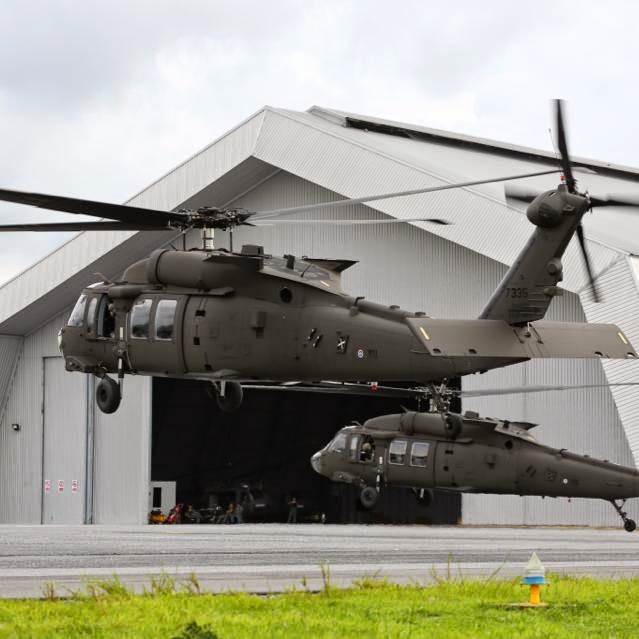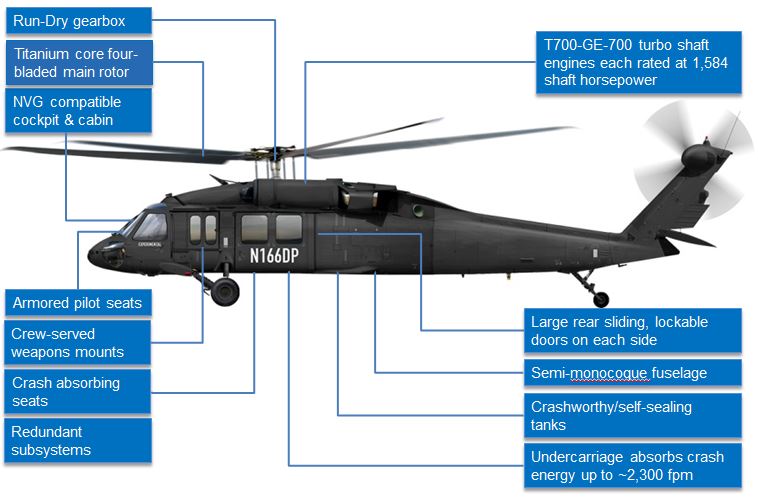Flight Ready: Making Sure Optimal Problem for Your UH 60 Helicopter
Flight Ready: Making Sure Optimal Problem for Your UH 60 Helicopter
Blog Article
Navigating Uh 60 Helicopter Laws and Compliance Requirements

Regulatory Framework Summary
The regulatory framework controling UH-60 helicopter operations incorporates a complicated collection of policies and standards established by air travel authorities. These guidelines are created to guarantee the secure and effective procedure of UH-60 helicopters in different atmospheres. The Federal Aviation Management (FAA) plays a central function in establishing and enforcing these policies, which cover a large range of operational elements, including airworthiness standards, pilot certifications, upkeep demands, and operational treatments.
Compliance with these laws is essential for helicopter operators to keep the highest possible levels of security and operational stability. Failing to comply with these policies can result in severe effects, consisting of accidents, injuries, and regulative sanctions. For that reason, helicopter operators need to stay educated about the current regulative advancements and ensure that their operations remain in complete compliance with all suitable rules and requirements.
Airworthiness Evaluations and directives
In the middle of the governing framework regulating UH-60 helicopter operations, a critical emphasis rests on conformity with Airworthiness Directives and performing comprehensive examinations to maintain safety and security requirements and functional reliability. Airworthiness Directives (Advertisements) are released by air travel authorities to attend to unsafe problems in airplane, consisting of the UH-60 helicopter, and required particular actions to be taken by drivers or proprietors. Conformity with Advertisements is compulsory, and failing to stick to these directives can cause serious effects, consisting of grounding of the aircraft.
Normal assessments are paramount to ensuring the airworthiness of UH-60 helicopters. By adhering to a stringent examination program, operators can discover and resolve possible concerns promptly, thus improving the security and dependability of UH-60 helicopter operations.
Pilot Certifications and Training

Pilot training for UH-60 helicopters is extensive and covers a wide variety of topics, consisting of aircraft systems, emergency situation treatments, navigating, and mission-specific training. In addition, pilots go through simulator training to exercise different emergency situation circumstances in a regulated environment. This training assists pilots establish the necessary abilities to handle challenging scenarios effectively.


Furthermore, continuous training and specialist development are necessary for UH-60 pilots to stay existing with the latest regulations, innovation, and ideal methods. By spending in pilot qualifications and training, operators can enhance security, optimize performance, and ensure compliance with regulative demands in the operation of UH-60 helicopters.
Operational Limitations and Needs
Pilot certifications and training work as the structure for comprehending the functional limitations and requirements connected with UH-60 helicopter operations (uh 60). browse this site These operational limitations are established to make certain the security of the team, passengers, and the airplane itself. Operational limitations may consist of factors such as climate condition, weight constraints, elevation restrictions, and operational boundaries. It is vital Go Here for pilots to be fluent in these constraints to make informed choices throughout trip operations. Furthermore, conformity demands, such as sticking to certain trip courses, communication protocols, and emergency situation treatments, are important for keeping operational security and governing compliance. Pilots have to remain existing with all operational constraints and needs with regular training, briefings, and evaluates to mitigate risks and make sure reliable and secure UH-60 helicopter operations. By focusing on adherence to these functional guidelines, pilots can improve the total security and performance of their missions while upholding governing requirements.
Emergency Treatments and Conformity Screening
Reliable emergency situation treatments and complete conformity screening are important components of maintaining functional security and regulatory adherence in UH-60 helicopter operations. Routine conformity testing ensures that the helicopter fulfills all regulative needs set forth by aviation authorities.
Compliance screening additionally encompasses devices onboard the UH-60, such as interaction systems, navigating instruments, and safety gear. Making sure that all equipment is working correctly and satisfies regulative standards is necessary for secure operations. In addition, compliance screening may include simulations of emergency circumstances to examine the team's action and the helicopter's performance under tension. By focusing on emergency treatments and compliance testing, UH-60 operators can alleviate threats and demonstrate their commitment to security see and regulatory conformity.
Conclusion
Finally, adherence to governing structure, conformity with airworthiness directives, pilot qualifications and training, functional limitations, and emergency situation procedures are essential for navigating the guidelines and requirements of running a UH-60 helicopter. uh 60. It is essential for operators to prioritize safety and make certain complete conformity with all suitable guidelines to preserve the airworthiness and operational honesty of the aircraft
Navigating the governing landscape bordering UH-60 helicopter procedures requires a nuanced understanding of the elaborate web of guidelines and conformity demands.Conformity with these laws is vital for helicopter operators to maintain the highest possible degrees of security and functional honesty.In the middle of the regulatory structure controling UH-60 helicopter procedures, an essential focus lies on compliance with Airworthiness Directives and carrying out detailed assessments to promote safety and security standards and functional integrity.Reliable emergency situation treatments and complete conformity screening are vital elements of preserving functional safety and governing adherence in UH-60 helicopter operations. Regular compliance screening makes certain that the helicopter fulfills all regulatory needs set forth by aviation authorities.
Report this page